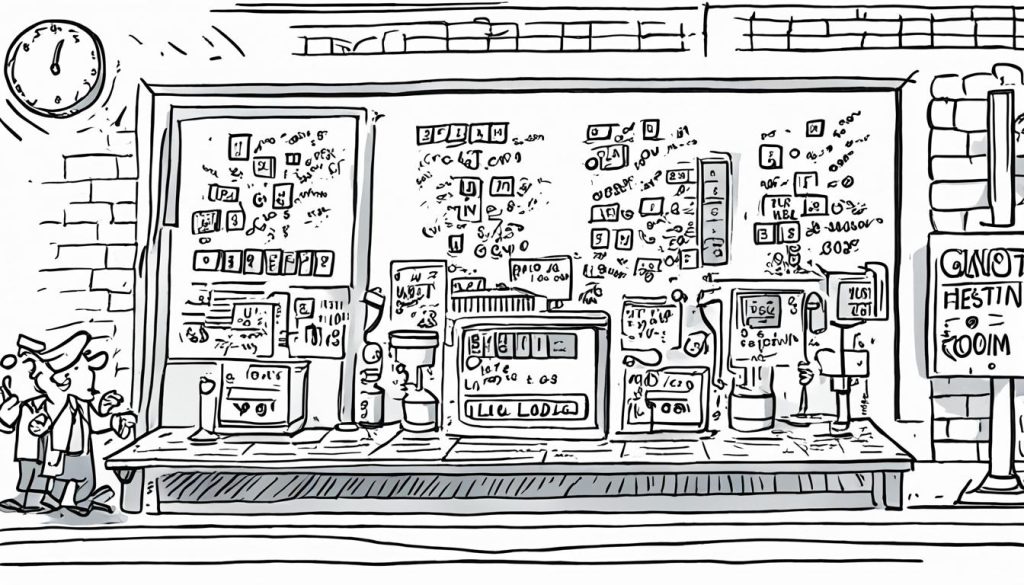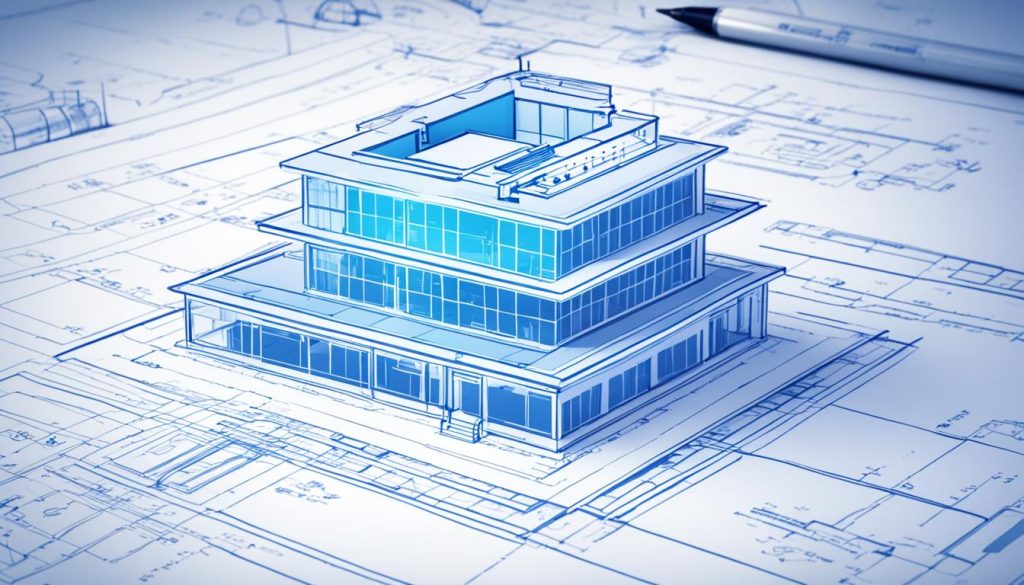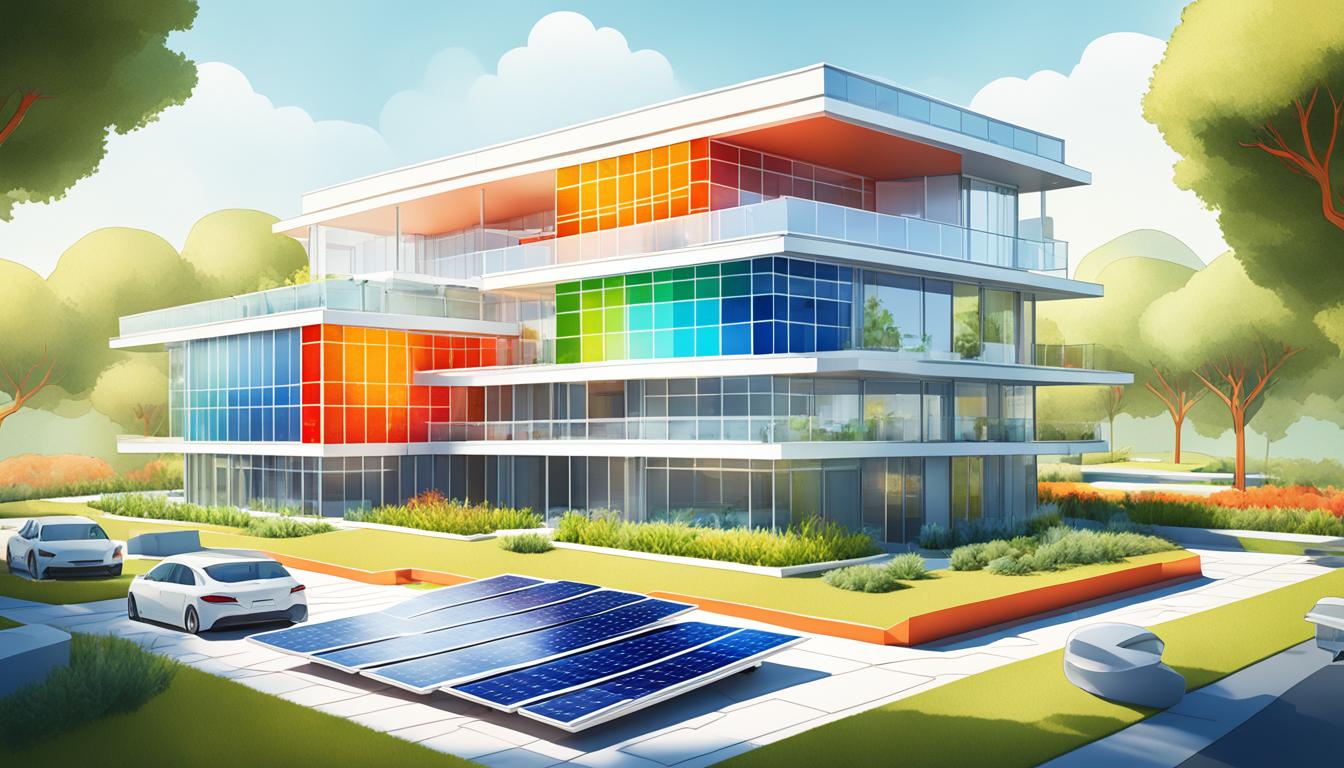Improving energy efficiency in your home or building is easy with accurate heat load calculations. These calculations help figure out the exact heating and cooling needs. This leads to the right size for your HVAC system and better building performance.
Heat load calculations look at building features, how often it’s used, and the local weather. By doing a detailed check, you avoid HVAC systems that are too big or too small. This saves energy and keeps people more comfortable.
Getting the heat load right is key for saving money and keeping the inside of your building comfy. It shows how your building handles heat, helping you pick the best ways to save energy and upgrade your system.
Understanding the Importance of Heat Load Calculations
Heat load calculations are key to making HVAC systems work better and keep buildings comfortable. They help figure out the right size for heating and cooling systems. This leads to saving on energy costs and better system performance.
Definition and Purpose of Heat Load Calculations
Heat load calculations look at how a building’s size, insulation, climate, and how often it’s used affect its heating and cooling needs. By understanding these factors, you can find out exactly how much heating or cooling is needed to keep the inside temperature just right.
Impact on Energy Efficiency and Comfort
Getting heat load calculations right makes HVAC systems work better and keep people comfortable. When systems are the right size, they use less energy and keep temperatures steady. This means people are happier and there’s less energy wasted.
Cost Savings Associated with Accurate Calculations
Getting heat load calculations right can save a lot of money in several ways:
- Lower energy bills because systems work better
- Less money spent on installing systems that are too big
- Systems last longer because they’re the right size and don’t work too hard
- Less money spent on keeping systems running smoothly
By using precise heat load calculations, you make sure your HVAC system works perfectly. This means better comfort and lower energy bills. These calculations are key to saving energy and managing it well in homes and businesses.
Key Factors Influencing Residential Heat Load
Knowing what affects your home’s heat load is key for comfort and saving energy. Many factors decide how much heating or cooling your house needs.
Insulation quality is a big factor. Good insulation keeps heat from getting in or out, making your HVAC system work less hard. The R-value of insulation shows how well it blocks heat.
How your house is built also matters. Windows facing the sun in the north let in more heat in winter, which can cut heating costs. But, they let in more heat in summer, so cooling costs might go up.
Windows and doors play a big role in losing or gaining heat. Their size, type, and where they are can change how well your house stays warm or cool. Using windows with special coatings can make your home more energy-efficient.
How often people live in your house also affects the heat inside. More people, more cooking, and more electronics mean more heat. A house with lots of activity will need different heating than one that’s empty.
| Factor | Impact on Heat Load | Energy Efficiency Tip |
|---|---|---|
| Insulation | Reduces heat transfer | Upgrade to high R-value materials |
| Building Orientation | Affects solar heat gain | Use shading devices for sun control |
| Windows and Doors | Can be sources of heat loss | Install energy-efficient models |
| Occupancy Patterns | Increase internal heat gains | Use programmable thermostats |
Thinking about these factors helps you make smart choices for your home’s energy use and comfort. Understanding them helps with better heat load calculations and efficient HVAC designs.
Components of Heat Load Calculation: Sensible and Latent Heat
Understanding how to calculate heat load is key for a balanced HVAC system and saving energy. There are two main types of heat: sensible and latent. Let’s look at each and see how they add up to the total heat load.
Sensible Heat Load Explained
Sensible heat changes the air temperature. It’s the heat you can feel with a thermometer. Things like sunlight, appliances, and body heat add to sensible heat. When figuring out sensible heat, we consider building materials and how much sun gets in.
Latent Heat Load and Its Significance
Latent heat deals with moisture in the air and is crucial for controlling humidity. It’s the energy needed to turn water into vapor without changing its temperature. Cooking, showering, and breathing are sources of latent heat. Managing this heat well is important for comfort and stopping mold.
Balancing Sensible and Latent Heat for Optimal Efficiency
Getting the right mix of sensible and latent heat is key for a well-working HVAC system and saving energy. This mix helps control temperature and humidity inside. Here’s a look at how sensible and latent heat compare:
| Aspect | Sensible Heat | Latent Heat |
|---|---|---|
| Definition | Heat that changes temperature | Heat that changes state of matter |
| Primary Effect | Temperature change | Humidity change |
| Main Sources | Sunlight, appliances, body heat | Cooking, showering, breathing |
| Calculation Factors | Building materials, solar gain | Occupant activities, climate humidity |
By accurately figuring out both sensible and latent heat loads, you can make an HVAC system that keeps indoor conditions perfect while using less energy.
Methods and Tools for Accurate Heat Load Calculations
Getting the right heat load calculations is key to designing efficient HVAC systems. You can choose from manual methods or advanced software to do these calculations. Each method has its own benefits.
The Manual J calculation is a go-to for figuring out heating and cooling needs in homes. It looks at the building’s details, the local weather, and how often it’s used. This helps figure out what the HVAC system should do.
For bigger projects, load calculation software is a better choice. These tools can handle lots of variables at once. They give detailed simulations. Some top picks include:
- EDS Load Calculator
- EnergyPlus
- Carrier’s HAP
Energy modeling tools go even further. They simulate how a building will perform over time. They consider things like weather and how people use the building. These tools are great for making buildings more energy-efficient and comfortable, whether it’s a new building or an old one.
| Calculation Method | Accuracy | Complexity | Best For |
|---|---|---|---|
| Manual J | Good | Moderate | Residential projects |
| Load Calculation Software | Very Good | High | Commercial buildings |
| Energy Modeling Tools | Excellent | Very High | Complex projects, retrofits |
To get accurate calculations, make sure you have all the building details. Check the insulation, windows, doors, and the local weather. HVAC experts often use special software for big projects to get precise results.
Improve Energy Efficiency with Heat Load Calculations
Heat load calculations are key to saving energy. They help you understand your building’s needs. This leads to smart choices that save money and make your space more comfortable.
Optimizing HVAC System Size
Getting your HVAC system the right size is crucial. It prevents short-cycling and inefficient running. This means your system uses less energy and keeps your space at a good temperature.
Enhancing Building Envelope Performance
Your building’s envelope fights against heat transfer. Improving insulation and sealing air leaks can greatly reduce heat load. This means your HVAC works less, saving energy and keeping temperatures steady.
Implementing Smart Control Strategies
Smart thermostats change the game for energy use. They let you set heating and cooling times based on your life. You can control different rooms, avoiding wasted energy in empty spaces.
Using these strategies together – better HVAC systems, improved envelopes, and smart controls – leads to big energy savings. You get a more efficient, comfortable, and cost-effective space.
Common Mistakes in Heat Load Calculations and How to Avoid Them

Heat load calculations are key to designing efficient HVAC systems. But, many professionals make mistakes that can cause poor performance and higher energy bills. Let’s look at these errors and how to dodge them.
Oversizing HVAC Systems
Oversizing HVAC systems is a common mistake. It happens when the needed cooling or heating capacity is overestimated. This leads to systems that cycle too much, losing efficiency and control over humidity. To avoid this, use the right data and skip adding too many safety factors.
Inaccurate Data Input
Using wrong data is another big mistake. Old building info or wrong measurements can really mess up the results. Always get the latest, correct details about the building’s layout, insulation, and how it faces the sun.
Neglecting Internal Heat Gains
Many forget to include heat from people, lights, and appliances in their calculations. This can make systems too small, struggling to keep the space comfortable. Make sure to add all heat sources into your calculations for the best outcome.
| Common Mistake | Impact | Prevention |
|---|---|---|
| Oversizing HVAC systems | Reduced efficiency, poor humidity control | Use accurate data, avoid excessive safety factors |
| Inaccurate data input | Skewed results, improper system sizing | Gather current, precise building information |
| Neglecting internal heat gains | Undersized systems, comfort issues | Include all heat sources in calculations |
Avoiding these mistakes means you’ll get more accurate heat load calculations. This results in HVAC systems that are just the right size, use less energy, and keep people more comfortable. Always use the latest methods and tools for the best results.
Case Studies: Successful Energy Efficiency Improvements Through Accurate Load Calculations
Accurate heat load calculations are key to making buildings more energy efficient. Let’s look at real examples that show how precise calculations help buildings perform better.
Residential Case Study
A 1970s single-family home in Boston got an energy retrofit. The focus was on upgrading the HVAC system. With exact heat load calculations, the homeowners cut their energy use by 30%.
- Replacing old windows with double-pane, low-E glass
- Adding insulation to walls and attic
- Installing a high-efficiency heat pump
Commercial Building Case Study
A 10-story office building in Chicago made big changes thanks to precise load calculations. The results were amazing:
| Metric | Before | After | Improvement |
|---|---|---|---|
| Annual Energy Costs | $250,000 | $175,000 | 30% reduction |
| HVAC System Efficiency | SEER 10 | SEER 18 | 80% increase |
| Occupant Comfort Complaints | 25 per month | 3 per month | 88% decrease |
Lessons Learned and Best Practices
These case studies teach us important lessons for boosting energy efficiency:
- Do a detailed building assessment before making upgrades
- Use advanced tools for accurate heat load estimates
- Think about future building use when sizing HVAC systems
- Keep up with regular system maintenance to stay efficient
- Recalculate heat loads as building conditions change
By following these best practices, you can save a lot of energy and make both homes and offices more comfortable.
Integrating Heat Load Calculations with Building Design and Renovation
Heat load calculations are key to making buildings use energy wisely. By adding these calculations to the design and renovation process, you can make your building work better. This helps with using the sun’s energy and building green, making buildings more comfortable and efficient.
When building a new place, doing heat load calculations early helps make important choices. You can pick the best direction for the building, where to put windows, and how much insulation you need. For updating old buildings, these calculations help pick the best energy-saving upgrades and HVAC changes.

Using the sun’s energy wisely is big on passive solar design. Knowing how heat moves in your building lets you use natural heating and cooling better. This means you use less energy for heating and cooling.
For making buildings more energy-efficient, precise heat load calculations are a must. They show where heat is lost or gained, helping you focus on upgrades. You might work on making insulation better, updating windows, or sealing gaps based on these findings.
| Design Phase | Heat Load Calculation Application | Benefits |
|---|---|---|
| New Construction | Inform building orientation and envelope design | Optimized passive solar performance |
| Renovation | Guide selection of energy-efficient upgrades | Targeted improvements for maximum impact |
| HVAC Design | Size heating and cooling systems accurately | Improved comfort and energy efficiency |
Adding heat load calculations to your building projects means you’re building green. This makes buildings more comfortable and saves energy over time. The secret is to do accurate calculations and use them well in your plans.
Future Trends in Heat Load Calculation and Energy Efficiency
The future of heat load calculation and energy efficiency is changing fast. New tech and tougher rules are changing how we handle HVAC systems and building designs. Let’s look at what’s coming next.
Advancements in Calculation Software
Calculation software is getting smarter and more precise. Artificial intelligence in HVAC is changing how we predict and manage heat loads. These smart programs learn from real data, getting better over time. Soon, you’ll see software that changes calculations instantly based on new conditions.
Emerging Technologies for Load Management
IoT is changing how we manage energy. Smart sensors and devices let HVAC systems adjust on the fly. Expect more buildings with systems that change based on people, weather, and energy prices. This will save a lot of energy and make buildings more comfortable.
Anticipated Changes in Building Codes and Standards
Energy efficiency rules are getting tougher. Future codes will ask for more precise heat load calculations and higher efficiency. Keeping up with these changes will help you save energy and meet standards in your projects.
| Trend | Impact | Benefits |
|---|---|---|
| AI in HVAC | More accurate predictions | Improved system efficiency |
| IoT Energy Management | Real-time system adjustments | Reduced energy waste |
| Stricter Regulations | Higher efficiency requirements | Lower environmental impact |
These trends are leading to smarter, data-driven ways to handle heat load calculation and energy management. This change will make buildings more efficient, comfortable, and green than ever.
Conclusion
Getting the right heat load calculations is key to making buildings use energy wisely. By sizing HVAC systems correctly, you can make your building work better and save energy. This also means less energy waste.
Using smart controls with the right heat load data makes buildings more sustainable. When you match energy-efficient HVAC systems with accurate calculations, you can lower costs and keep people comfortable. This is good for both the building and the people inside.
As technology gets better, the role of heat load calculations in improving building performance will become even more important. Adopting these methods helps create spaces that are comfortable, cost-effective, and good for the environment. By focusing on accurate heat load calculations, you’re helping build a better future for your building and the Earth.





0 Comments